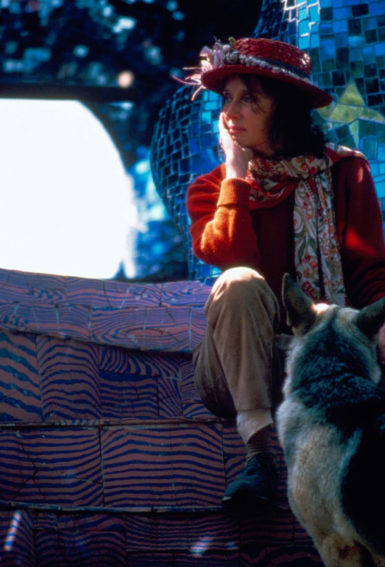[ad_1]

Niki de Saint Phalle, Tarot Garden, 1991.
©2019 NIKI CHARITABLE ART FOUNDATION/ED KESSLER
Niki de Saint Phalle occupies an unusual place in art history. In Europe, where de Saint Phalle made some of her most important works, first, making avant-garde paintings as a member of the Nouveau Réalisme movement in France during the 1950s and ’60s, and then as a sculptor of extroverted female figures in the following decades, the artist’s work has been widely shown. But in American museums, at least, de Saint Phalle’s work has largely gone unseen—until now.
Next year, MoMA PS1 in New York will open what is being billed as the artist’s first major U.S. survey—a 100-work show that will focus on the lesser-known sides of de Saint Phalle and feature a range of works produced by the artist between the 1970s and 2002, the year of her death at age 71. Sculptures, jewelry, prints, and drawings will be on view, as well as documentation related to some of de Saint Phalle’s important site-specific works from across Europe and elsewhere. The show is due to run from April 5 to September 7.

Niki de Saint Phalle photographed in the 1980s in Tarot Garden.
PHOTOGRAPHER UNKNOWN
“She’s one of the most famous female artists of the 20th century, but she’s so misunderstood and, in some ways, under-recognized,” Ruba Katrib, the show’s curator, told ARTnews.
De Saint Phalle may be best-known these days for her “Nanas” sculptures, which she began producing during the ’60s. These audaciously colored works with bulbous breasts seem like celebrations of the female form, but they also hint at the artist’s larger interest in subverting traditional power dynamics between men and women, and at her political engagement throughout her career.
Two decades after she began making the “Nanas,” in 1986, she illustrated AIDS: You Can’t Catch It Holding Hands, a book by the doctor Silvio Barandun focused on misconceptions about the disease that was among the most influential tomes on the subject. “She was always at the social and political forefront of issues during her time,” Katrib said.
Still, the artist is most often recognized for her joyous sculptures, which have been viewed by critics as both garish and groundbreaking, depending on the decade. They have appeared at retrospectives across Europe, most notably a 2014 one at the Grand Palais in Paris, and in situ at large-scale installations around the continent, such as a fountain outside the Centre Pompidou in Paris (where she had a survey in 1980) and the Tarot Garden, an Antoni Gaudí–inspired park in Capalbio, Italy, that features 14 acres of outrageously hued glass pieces. (Works such as the Tarot Garden will be represented at PS1 through photography and related archival materials.)
That de Saint Phalle would become so famous for works such as these might have been surprising to critics who witnessed her Nouveau Réaliste works, such as her “Tir” (Shoot) pieces, in which she fired a gun at paint-filled sacs affixed to canvases. Katrib said that works from that era—among her most widely shown in France—will largely be excluded in the PS1 show, partly in an attempt to shine a light on a lesser-known, though still expansive, part of de Saint Phalle’s oeuvre.
“Rather than re-inscribing Niki into a historical period,” Katrib said, “we can take work that’s less looked-at and more difficult to reconcile, and see it here.”
[ad_2]
Source link
